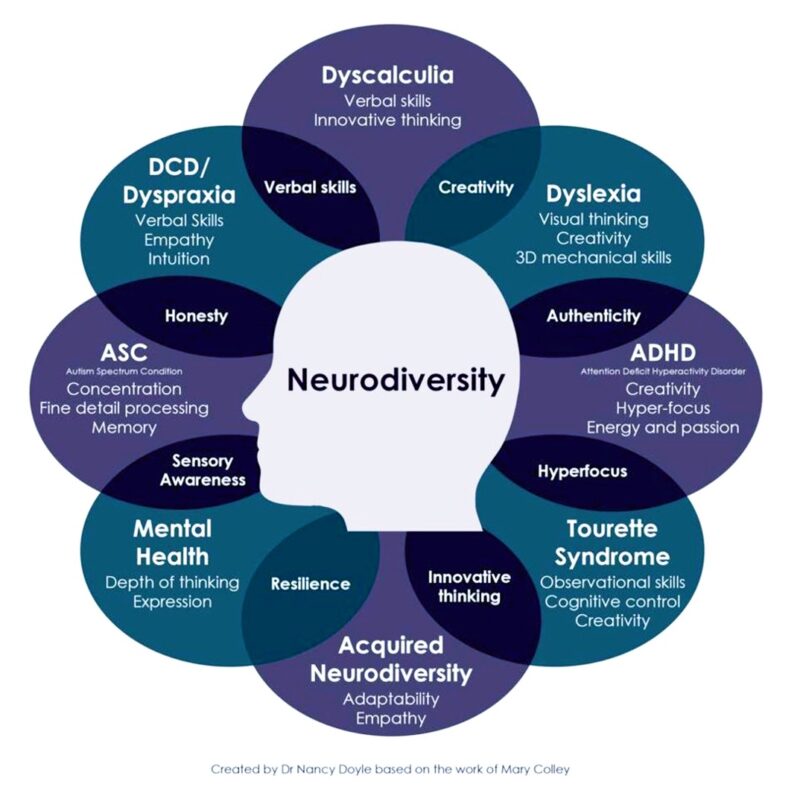Learning differences and neurodiversity are complex, and no two people are the same. The idea of neurodiversity, that brain differences are normal rather than flaws, can help people understand that these are variations of the human brain rather than abnormal conditions. In this way, all people are differently-abled to some extent because we are all born with different physical traits and have different experiences. Understanding neurodiversity can help raise awareness, reduce stigma, and change attitudes about learning differences and attention disorders.
At Groves, we work to understand a student’s diverse learning style and skill level, and then provide the resources they need to succeed. We offer individualized support, whether that means offering a specialized curriculum, a holistic array of services, or the guidance of a uniquely talented teacher or tutor with a deep understanding of learning disabilities and attention disorders.
Neurodiversity at Groves
At Groves, we understand that the relatively new use of the word neurodiversity is a means to include and recognize people who have unique minds and ways of thinking. When Groves refers to the neurodivergent students who we work with as our mission to build confidence, success, and purpose, through transformative learning experiences, these neurodivergent students primarily struggle with Dyslexia, ADHD, and Dyscalculia. We work to understand each of our student’s diverse learning styles and skill levels and meet them where they are by providing the resources and support they need to succeed. Groves is working to change the way learning and literacy are taught so students of all ages can reach their full potential — academically, socially, and emotionally. Every student is capable of learning; some just need a different way.
Who We Serve
Groves Academy and the Groves Learning Center help students who want to learn but struggle with a learning disability or attention disorder that affects academic achievement. These programs are not designed to help students with autism spectrum disorder, students with developmental or cognitive disabilities, disruptive or oppositional students, or students with emotional disabilities unrelated to a learning disability or attention disorder. Groves Literacy Partnerships make it possible for us to improve literacy instruction for all K-3 students, both new and struggling readers, in schools throughout the community.
1 in 8 Americans are Neurodivergent
We are living in a time of increasing numbers of neurodiversity and heightened awareness about ADHD, Dyslexia, LD, and other neurological states. Neurodivergent people tend to process information in various and sometimes unique ways, so it is important to concern their learning profiles. Adjusting to their environment, blocking out distractions, and managing their social interactions can be taxing. Being able to learn or work in an environment suited to their needs can prevent everyday tasks that other people might consider easy from being draining on top of the tasks they are working to accomplish.
For neurodivergent people, we know they can experience the environment in different ways—they could be hypersensitive or hyposensitive. The environment can either help or hinder their sensory system’s ability to process information.
Many college campuses now offer accommodations and are using the term neurodiversity as opposed to the term disability. The social model of disability comes from the field of disability studies, saying that a person is “disabled” when the (societal) environment doesn’t accommodate their needs. It is important to distinguish that providing more equal opportunities is not ignoring people’s differences or their difficulties.
A 2017 article in the Harvard Business Review summarizes that many people with neurological conditions have extraordinary skills, including pattern recognition, memory, and mathematics. They can however struggle to fit the profiles that many employers seek. A growing number of companies are reforming hiring processes in an attempt to “access neurodiverse talent—and are seeing productivity gains, quality improvement, boosts in innovative capabilities, and increased employee engagement as a result.”
Want to learn more?
Check out these 12 Books for Parents of Students With Learning Disabilities Like Dyslexia and ADHD, Groves Teachers Share Favorite Book Selections for Young Readers, and this reading list of 50 Must-Read Books About Neurodiversity.
NEVER MISS AN UPDATE
Don’t forget to sign up for our news and blog updates in the purple box below- and follow us on social media so you don’t miss a thing.
LinkedIn | Facebook | YouTube | Twitter | Instagram
Share your news, success story, or meaningful moment about Groves through our online form.

